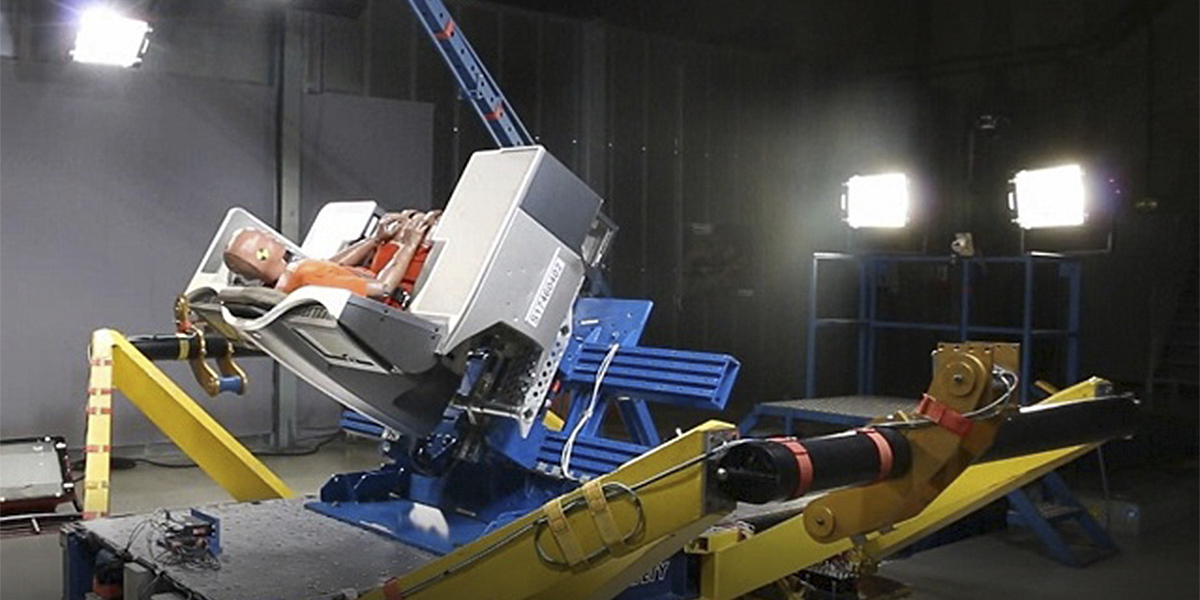FMVSS 302 Flammability Testing of Safety Restraint Materials
The Federal Motor Vehicle Safety Standard (FMVSS) 302 is a critical regulation that sets safety standards for motor vehicles in the United States. Specifically, FMVSS 302 addresses the flammability requirements for seat coverings and other materials used in automotive safety restraints such as seat belts and airbags. This standard ensures that these materials do not catch fire easily under various conditions and can withstand exposure to heat without compromising passenger safety.
The testing protocol outlined in FMVSS 302 involves subjecting the restraint material samples to controlled burn tests. The primary objective is to determine whether the material will ignite, sustain combustion, or produce smoke when exposed to a specified flame source for a defined period. This stringent testing ensures that the materials used in safety restraints meet rigorous flammability standards.
The testing process typically involves the following steps:
- Selection of appropriate test specimens
- Preparation of the specimens according to standard procedures
- Exposure of the specimen to a controlled flame source for a predetermined duration
- Observation and measurement of the response of the material, including ignition time, burn rate, and smoke generation
- Evaluation against FMVSS 302 acceptance criteria
The standard specifies that materials used in safety restraints must not ignite within five seconds when exposed to a specified flame source. If a material ignites or burns for longer than one second after the flame is removed, it fails the test. Additionally, materials are evaluated based on their smoke density and heat release rates.
For quality managers and compliance officers, understanding these requirements is crucial. Regular testing ensures that suppliers meet stringent safety standards, thereby protecting passengers from potential hazards associated with flammable materials in automotive safety restraints.
R&D engineers play a vital role in developing new materials that meet the FMVSS 302 criteria. They must ensure that their innovations do not compromise on safety while also meeting market demands for comfort and style. By incorporating FMVSS 302 testing into their R&D processes, they can effectively assess material performance early in the development cycle.
For procurement professionals, selecting suppliers who adhere to these standards is essential. Ensuring that all materials used in safety restraints meet FMVSS 302 requirements helps maintain consistent product quality and ensures compliance with federal regulations.
Applied Standards
The primary standard applied for FMVSS 302 Flammability Testing of Safety Restraint Materials is the Federal Motor Vehicle Safety Standard (FMVSS) No. 302. This regulation is part of Title 49, Code of Federal Regulations, and sets forth specific requirements for the flammability characteristics of seat coverings and other materials used in automotive safety restraints.
ISO standards also play a significant role in complementing FMVSS 302. For instance, ISO 12269 covers the general principles for fire safety and can provide additional context on material flammability testing methods. Additionally, ASTM D575 provides guidelines on the determination of heat release rates from materials under controlled atmosphere conditions.
The combination of these standards ensures comprehensive evaluation criteria that are both domestically relevant (FMVSS) and internationally recognized (ISO). This harmonization allows for a consistent approach to flammability testing across various jurisdictions, ensuring uniformity in safety requirements.
Customer Impact and Satisfaction
The implementation of FMVSS 302 Flammability Testing ensures that automotive manufacturers provide vehicles with materials that are inherently safer. Customers benefit from this standard as it reduces the risk of fires originating from flammable safety restraint materials, thereby enhancing overall vehicle safety.
Customer satisfaction is directly linked to product performance and reliability. By adhering to FMVSS 302 standards, automotive companies can reassure consumers about the quality and safety of their products. This compliance not only meets regulatory requirements but also builds trust among customers who value safety above all else.
In addition to enhancing consumer confidence, meeting these standards helps manufacturers avoid costly recalls and legal issues associated with non-compliant products. It also allows them to stay ahead in a competitive market by demonstrating commitment to high-quality materials and rigorous testing protocols.
For quality managers, compliance officers, R&D engineers, and procurement professionals, ensuring adherence to FMVSS 302 is essential for maintaining brand reputation and customer trust. By prioritizing safety throughout the product lifecycle, these stakeholders contribute significantly to both internal operations and external perceptions of reliability and integrity.
Environmental and Sustainability Contributions
The application of FMVSS 302 Flammability Testing has significant environmental and sustainability implications. By ensuring that materials used in automotive safety restraints do not ignite easily, the standard helps prevent fires, which can have devastating effects on both human life and ecosystems.
Reducing fire incidents associated with flammable materials contributes to lower greenhouse gas emissions, as fewer resources are needed for emergency response and recovery operations. Additionally, minimizing waste generated from recalled or scrapped vehicles enhances sustainability efforts by promoting more sustainable use of raw materials.
Achieving FMVSS 302 compliance also encourages the development and adoption of innovative fire-resistant materials that could potentially be used in other sectors beyond automotive safety restraints. This cross-industry innovation fosters a culture of continuous improvement towards greener technologies across various industries.
For manufacturers aiming to reduce their carbon footprint, focusing on FMVSS 302 compliance aligns with broader sustainability goals. It demonstrates proactive steps taken by companies to address environmental challenges while maintaining robust safety standards.





